Paletas can be made in many flavours. Sabor Judío includes a recipe that uses Manischewitz wine. (photo by Ilan Rabchinskey)
The minute I saw the cover, I wanted to try some of the recipes in Sabor Judío: The Jewish Mexican Cookbook by Ilan Stavans and Margaret E. Boyle. Not only did I learn how to make some very tasty food, but I learned a bit about the Jewish community in Mexico and its history.
 Published by the University of North Carolina Press, with hunger-inducing colour photographs by Ilan Rabchinskey, and written by two Jewish Mexican scholars (now living in the United States), Sabor Judío was a cultural experience for me, never having been to Mexico before and only ever having made a basic burrito at home. Of course, I’ve eaten at many Mexican restaurants over the years, but Sabor Judío features recipes you won’t necessarily find in a restaurant here in Vancouver, or even in Canada, though local Jewish community members with Mexican roots might make some of these dishes at home.
Published by the University of North Carolina Press, with hunger-inducing colour photographs by Ilan Rabchinskey, and written by two Jewish Mexican scholars (now living in the United States), Sabor Judío was a cultural experience for me, never having been to Mexico before and only ever having made a basic burrito at home. Of course, I’ve eaten at many Mexican restaurants over the years, but Sabor Judío features recipes you won’t necessarily find in a restaurant here in Vancouver, or even in Canada, though local Jewish community members with Mexican roots might make some of these dishes at home.
There were two very important inspirations for Sabor Judío.
One was Stavans’ grandmother, Bobe Miriam, whose recipe book, written in a mix of Yiddish and Spanish, was started in the 1920s, after she immigrated to Mexico from Poland. It evolved over decades, as she figured out what worked and what didn’t, and as ingredients changed. The notebook “wasn’t just about cooking; it was also a time capsule that chronicled, through dishes, the Jewish family’s process of assimilation into Mexico and the way La Comunidad, as the Jewish Mexican community is known, showcases its personality to the world.”
The other was Boyle’s great-grandmother, Baba Malka, also a Polish immigrant to Mexico: “While Baba Malka was still actively cooking, her children, grandchildren and great-grandchildren took turns observing and documenting her work in the kitchen in Mexico City, filling the notebook’s pages with notes and adaptations in Spanish, Hebrew and English as the family generations expanded across Mexico and into the United States.”
The recipes in Sabor Judío are “dishes collected from grandmothers and other beloved home cooks, professional chefs and bakers, and a variety of historical sources,” writes cookbook author Leah Koenig in the preface. Even she came across ingredients she had never used before. “I learned the hard way that nopales (cactus paddles) should always be handled wearing gloves, lest the prickly spines leave your hands stinging for the rest of the day.”
The recipe for Cactus Tomato Salad does include a note about the proper handling of cactus leaves. But, not sure of where I could buy cactus here, I inadvertently saved myself the trouble of removing the spines, boiling the cactus and cutting it into 1/4-inch pieces by buying a jar of cactus that was already prepared in that way. This substantially eased the process of making this salad, which was very good, though I’m sure fresh cactus would have made it even better.
I chose what to make from Sabor Judío by looking at what the cookbook authors recommended as a festive Hanukkah meal, which includes the Cactus Tomato Salad. I had already singled out the Falafel Taquitos because I liked the idea of mixing Mexican and Middle Eastern flavours. In the end, there was a bit of a disconnect for me between the taste of the falafel centre and that of the corn tortilla shell. In eating leftovers the next day, I greatly enhanced the enjoyment of this dish by adding some fresh-cut tomatoes and cucumber.
I also had already eyed Agua de Horchata because of the first sentence in its description, which says that the rice-milk drink – which is believed to have 11th-century North African origins – “accompanies a good Mexican Jewish meal.” I was very pleased with how it turned out. I will definitely make it again.
The Latkes con Mole were as labour-intensive (grating potatoes and onion) and delicious as other latkes I’ve had, and I would happily swap out my usual apple sauce every so often for mole and crumbled queso fresco, even though it takes a lot of time to make mole.
I tried a second fried item, it being for Hanukkah and all, and the Sor Juana’s Ricotta Buñuelos were so good, if that’s a thing. The anise really made them pop, and I ate way too many.
Lastly, knowing how much I like paletas, I couldn’t resist making the frozen treats using Manischewitz. The wine most definitely tastes better frozen, after being steeped in cinnamon, cloves and orange.
There are other Hanukkah – Janucá – meals, as well as suggested menus for other Jewish holidays. In total, there are about 100 recipes in Sabor Judío, including desserts. One thing you’ll learn from this cookbook is that the Canadian and Mexican concepts of breakfast, lunch and dinner differ somewhat. You’ll learn some Spanish, some history and more. You’ll be introduced to some new-to-you ingredients and ways to combine those ingredients.
As Stavans and Boyle wish readers at the end of their book’s introduction, perfectly capturing the fusions taking place throughout it: “¡Buen provecho! Mit a gutn apetit! Kome kon gana!” Enjoy your meal(s).
FALAFEL TAQUITOS
(serves 6; prep takes 30 minutes plus overnight soaking and a 30-minute chilling time; 20 minutes to bake)
for the taquitos:
1/2 lb dried chickpeas, soaked overnight in water, then rinsed and drained
1/2 medium yellow onion, roughly chopped
2 tbsp fresh parsley, roughly chopped
2 tbsp cilantro, roughly chopped
2 medium garlic cloves, roughly chopped
1 tsp kosher salt, plus more as needed
1 tsp ground cumin
1/2 tsp ground coriander
1/8 tsp cayenne
vegetable oil, for brushing
12 (6-inch) corn tortillas
for the tahini sauce:
1/2 cup well-stirred tahini
1/4 cup fresh lemon juice
1/4 cup cold water
1. Add the chickpeas to a food processor bowl along with the onion, parsley, cilantro, garlic, salt, cumin, coriander and cayenne. Pulse, scraping down the sides of the bowl as needed until a textured paste forms. Taste and add more salt, if needed. Transfer to a bowl and refrigerate the mixture for 30 minutes.
2. Heat the oven to 400˚F and brush a 9-by-13-inch baking dish with about 1 tablespoon of oil. Lay one tortilla on a flat surface and place a scant 1/4 cup of the filling along one edge, nudging it into a line. Roll up the tortilla tightly and place it seam-side down in the prepared backing dish. Repeat the process with the remaining tortillas and filling.
3. Brush the tops of the tortillas with more oil and bake until crispy and golden, 15-20 minutes. Meanwhile, whisk together the tahini, lemon juice and water. Serve the taquitos hot, drizzled with tahini sauce.
AGUA DE HORCHATA
(serves 8-10; prep takes 10 minutes, plus overnight soaking and a 4-hour chilling time)
2 cups long-grain white rice, rinsed well and drained
1 cinnamon stick
6 cups room-temperature water, divided, plus more as needed
3/4 cup granulated sugar
2 cups whole milk
2 tsp vanilla extract
ice, for serving (optional)
1. Place the rice and cinnamon stick in a large glass bowl and add 4 cups of the water. Cover the bowl and let the mixture soak overnight at room temperature (at least 8 hours).
2. Pour the soaked rice mixture into a high-powered blender along with the sugar and blend until smooth. (You can tear the cinnamon stick into smaller pieces to facilitate its blending.) Pour the mixture through a fine mesh sieve into a large wide-mouth pitcher, stirring and pressing the mixture with a spoon, if needed, to help the liquid pass through the sieve. (Discard any remaining solids.)
3. Whisk in the milk, the remaining 2 cups of water, and vanilla. Cover the pitcher and chill the horchata in the refrigerator until cold, at least 4 hours. (The mixture will continue to thicken as it chills.)
4. Just before serving, stir the horchata well and pour into glasses (over ice, if desired). If the horchata gets too thick, you can thin it with a little more water.
SOR JUANA’S RICOTTA BUÑUELOS
(makes 10-15 fritters; prep takes 40 minutes, plus 1-hour resting time; 30 minutes to cook)
1 cup ricotta cheese
6 egg yolks
1/4 cup granulated sugar, plus more for serving
2 1/2 tsp ground anise
3 cups all-purpose flour, plus more for rolling
1 1/2 tsp baking powder
vegetable oil, for frying
jam, for serving
1. Combine the ricotta, egg yolks, sugar and ground anise in the bowl of a stand mixer and beat on low until combined. Whisk together the flour and baking powder in a medium-sized bowl.
2. Add the flour mixture to the ricotta mixture in stages, beating on low and scraping down the sides of the bowl as necessary, until a thick and sticky dough forms. Cover the mixing bowl and let rest at room temperature for 1 hour.
3. On a large, floured work surface using a floured rolling pin, roll out the dough to a 1/8-inch thickness. Use a sharp knife and a plate or bowl with a 4-to-5-inch diameter to cut out circles. Gather the scraps and repeat the rolling and cutting process, if desired.
4. Heat 1/4 inch of oil in a medium frying pan set over medium heat until it reaches 350˚F on a digital thermometer, and line a large baking sheet with paper towels. Working with one circle of dough at a time, slip it into the hot oil and fry, turning once, until puffed and golden, 30 to 60 seconds per side.
5. Transfer the fritters to the paper towels to drain and cool slightly. Serve warm, sprinkled with more sugar or dolloped with jam.
PALETAS MANISCHEWITZ
(makes 6; prep takes 40 minutes; freeze 5 hours)
1 (750-ml) bottle Manischewitz sweet red wine
3 wide strips orange peel
4 whole cloves
1 cinnamon stick
2 cups water
thinly sliced limes and tangerines (optional)
1. Add the wine, orange peel, cloves and cinnamon stick to a medium saucepan set over medium-high heat. Bring the mixture to a boil, then lower the heat to medium and cook, stirring occasionally, until the liquid reduces to 1 cup, 30-35 minutes. Remove from the heat and let cool, then strain out and discard the spices and orange peel.
2. Stir the water into the strained wine syrup, then divide the mixture evenly among 6 paleta or flat popsicle molds. If desired, add a slice of lime or tangerine into each mold. Freeze until solid, at least 5 hours.

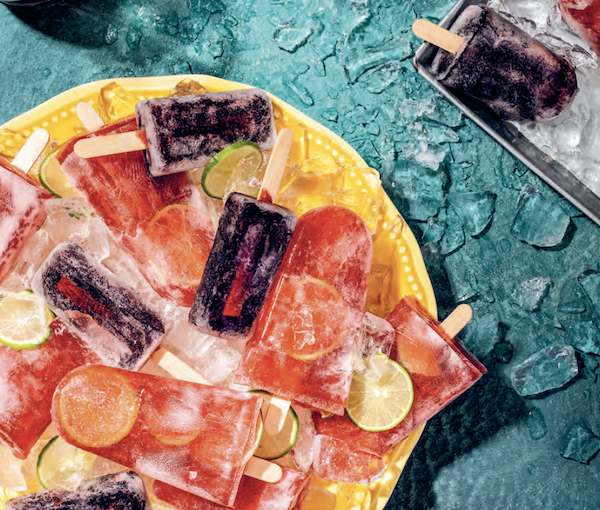
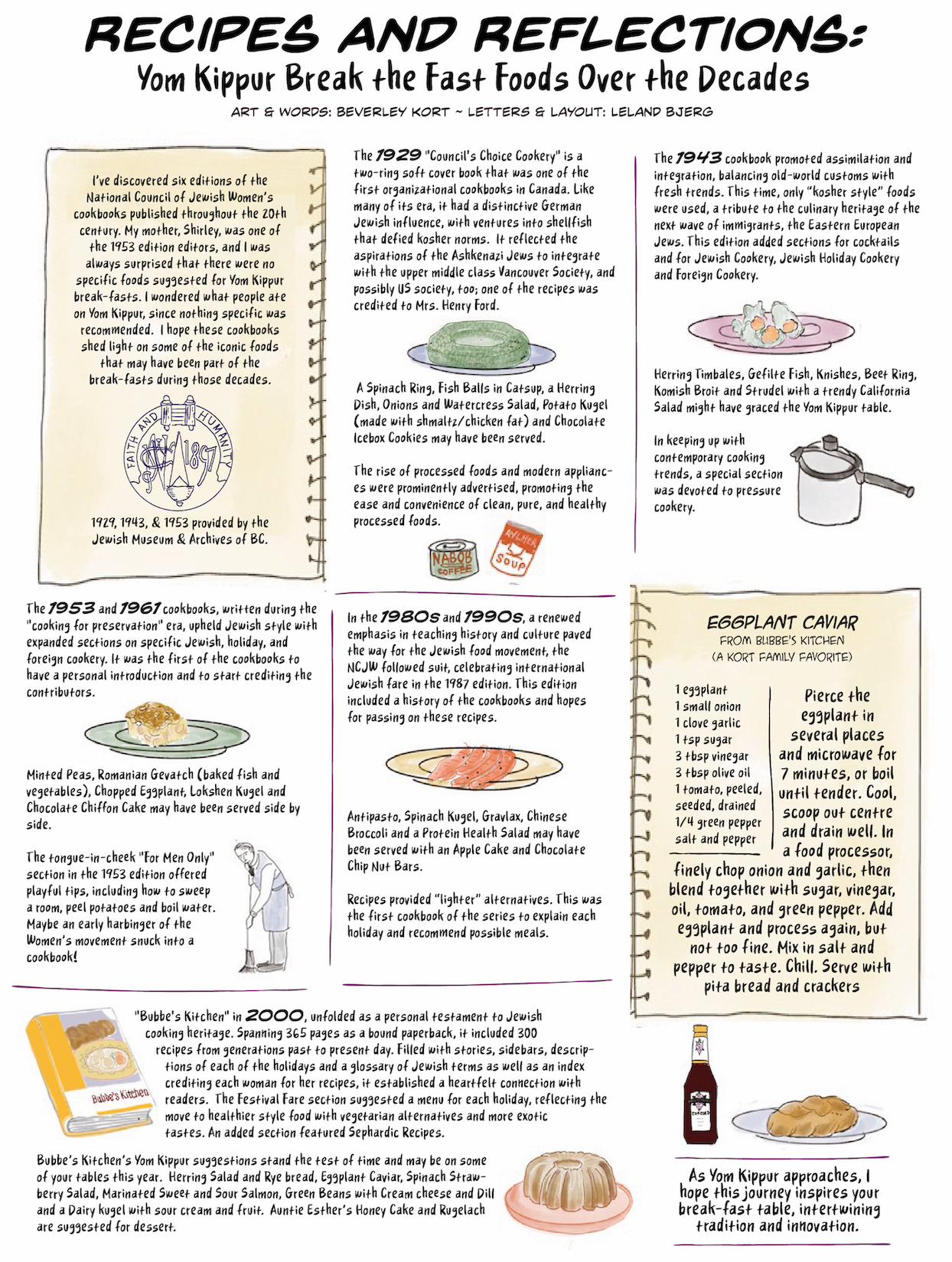

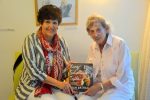
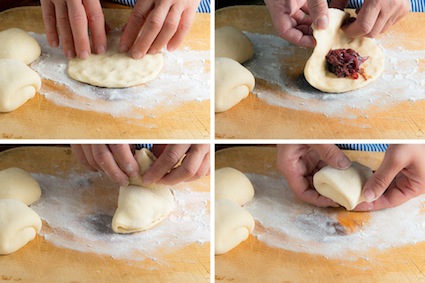
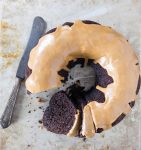
 Perfect for Pesach features more than 125 recipes, with mouth-watering photography by kosher blogger and cookbook author Miriam Pascal.
Perfect for Pesach features more than 125 recipes, with mouth-watering photography by kosher blogger and cookbook author Miriam Pascal.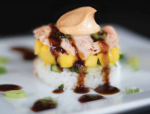
 “I love to cook and I love to entertain. The warmth and beauty of sharing a beautifully set Shabbos or holiday table with friends and family is my passion and joy,” she explained. “The satisfaction I feel when family and guests dig in for seconds, or when kids enjoy a new dish, this makes all the effort of planning and preparing worthwhile. My goal with Kosher Taste is to share this joy, this passion, with home cooks who are looking to experience delicious new tastes and flavors to share with their families.”
“I love to cook and I love to entertain. The warmth and beauty of sharing a beautifully set Shabbos or holiday table with friends and family is my passion and joy,” she explained. “The satisfaction I feel when family and guests dig in for seconds, or when kids enjoy a new dish, this makes all the effort of planning and preparing worthwhile. My goal with Kosher Taste is to share this joy, this passion, with home cooks who are looking to experience delicious new tastes and flavors to share with their families.”